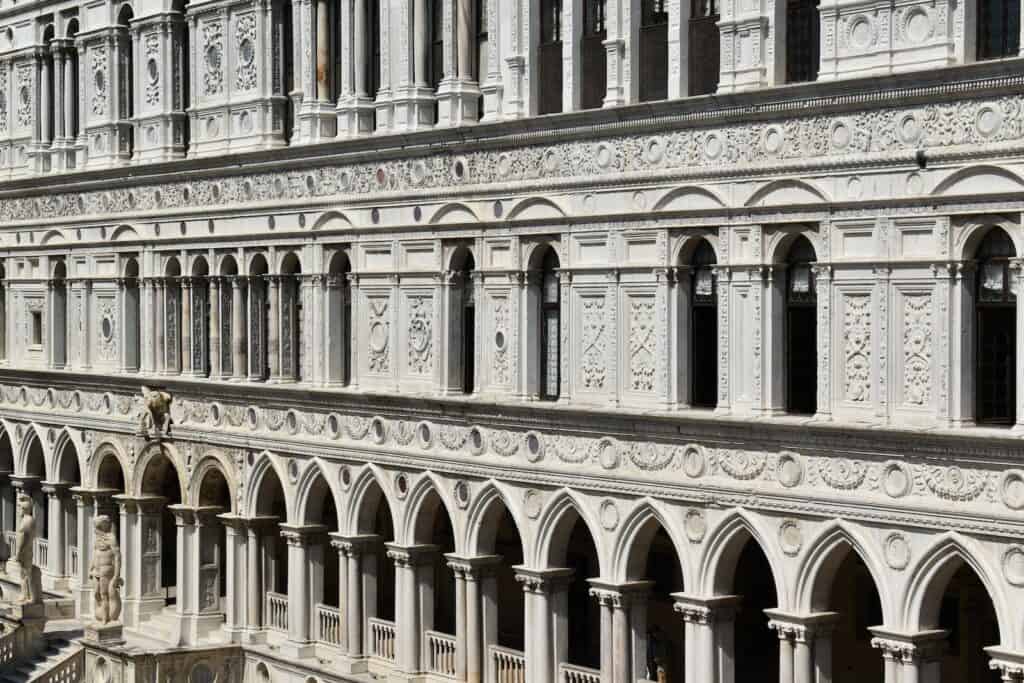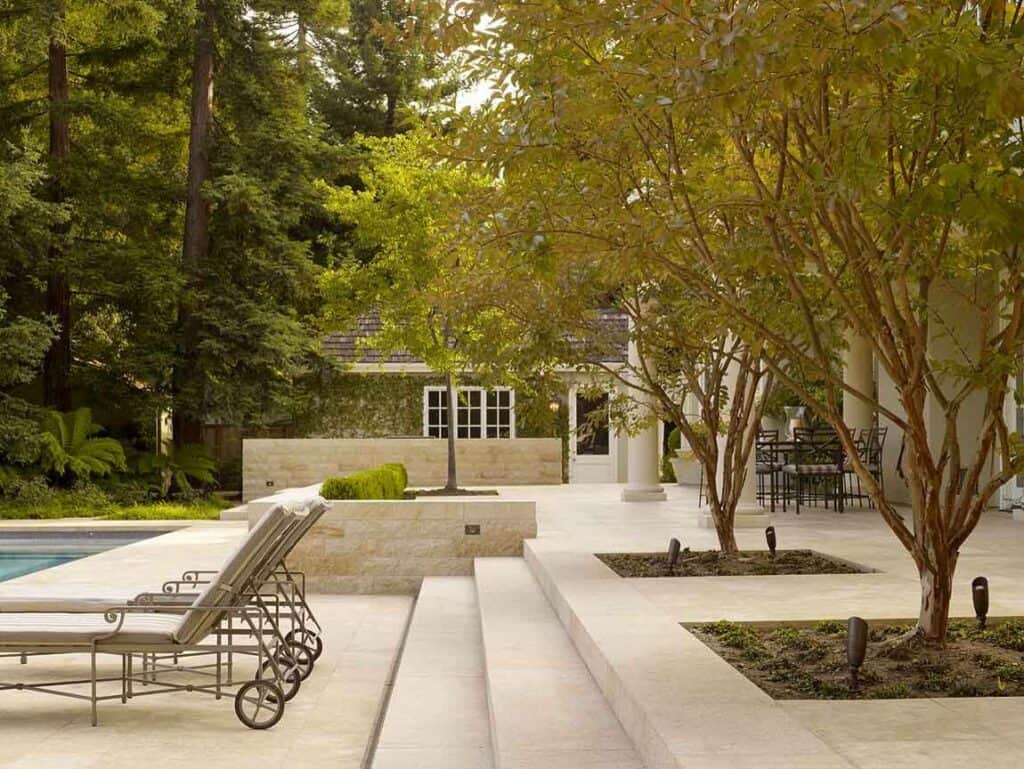Indiana Limestone Ontario Distributor
Limestone, a bedrock of architectural design, boasts both versatility and durability. Its historical usage provides a window into evolving architectural practices. Limestone, with its earthy allure and enduring strength, has been a silent witness to the rise and fall of civilizations, shaping skylines and crafting masterpieces for millennia. From the majestic pyramids of Giza to the grandeur of Roman coliseums, this versatile material has etched its mark on architectural marvels across epochs and continents.
Let’s embark on a journey through time, exploring the storied past of stone and tracing its transformative evolution from ancient edifices to modern-day marvels, uncovering the legacy of limestone and its indelible impact on the world of architecture.
Introduction to Limestone
Limestone, an aggregate of calcium carbonate, boasts a rich history in architecture due to its endurance and visual appeal. History bears witness to architects and builders worldwide appreciating limestone’s distinct qualities, incorporating it into the fabric of their structures. Evidence of this rock’s use in construction can be traced back to ancient civilizations, from Egypt’s pyramids to Greece’s temples.
The decision to adopt limestone for construction was largely influenced by its plentiful supply and easy accessibility. Numerous regions were blessed with this material, making it a convenient option for builders aiming to erect robust and enduring edifices. Beyond its structural benefits, limestone also contributes to the aesthetic allure of buildings. The rock’s gentle shades and understated patterns offer a visually pleasing finish, elevating the overall design.
Throughout time, architects have exploited limestone’s adaptability to craft magnificent edifices that bear witness to human creativity. Be it grand cathedrals, palaces, or monuments, limestone has found its place in a variety of architectural styles across different eras and geographical landscapes. Its widespread use speaks volumes about its timeless appeal among architects.
Exploring the role of limestone in ancient architecture reveals the stone’s remarkable utility by past civilizations, all while retaining its charm and functionality.
Limestone in Ancient Architecture
Ancient architecture gives plentiful instances of the astounding application of limestone, demonstrating the resourcefulness and proficiency of early civilizations.
Magnificent pyramids of Egypt or complex temples of Greece utilized limestone as a key building component, owing to its longevity and visual allure.
Egyptian architectural marvels, such as the iconic pyramids, owe their existence to limestone. The Great Pyramid of Giza, a testament to this fact, stands tall even today. Roman edifices too bear testimony to the extensive utilization of limestone. It adorned their buildings and walls, its durability and aesthetic appeal contributing to the grandeur of Roman structures. The timeless appearance and beauty of limestone facilitated the creation of architectural masterpieces that have withstood the ravages of time such as the Colosseum.
Serving dual purposes, these edifices not only vouch for the architectural expertise of their epoch but also persist as enduring symbols of the cultural and historical importance tied to old limestone construction.
Limestone in Medieval Architecture
Diversity and ingenuity mark the architecture of the medieval era. A myriad of forms typify this epoch, such as cathedrals, castles, and monasteries.
For example, gothic cathedrals, identified by their pointed arches and ribbed vaults, provide a prominent showcase for limestone usage in Medieval architecture. History and architectural evolution of this time lean heavily upon the significant role limestone played in construction. Here are noteworthy instances of limestone usage in medieval architecture:
| Example | Location | Notable Features |
|---|---|---|
| Notre-Dame de Paris | Paris, France | he iconic cathedral’s façade boasts white limestone, contrasting strikingly against the stained glass windows. |
| Chartres Cathedral | Chartres, France | Displays intricate sculptures and stunning stained glass windows within its limestone walls. |
| Durham Cathedral | Durham, England | Known for its sizable towers and meticulous carvings, showcasing the enduring strength of limestone. |
| Canterbury Cathedral | Canterbury, England | Its grandeur and imposing presence are enhanced by the use of fine-grained limestone. |
Architects and historians of our era continue to be astounded and inspired by magnificent structures adorned with intricate stone engravings, towering arches, ribbed vaults, and towering spires.

Limestone in Renaissance Architecture
The study of Renaissance architecture unveils numerous instances that highlight the unique aspects and uses of Limestone in this time period.
During the Renaissance era, architects began to appreciate limestone’s potential as a flexible construction material. It could be meticulously chiseled and molded to form complex facades and decorative components. The table below offers a glimpse into the prominent use of limestone in Renaissance architecture:
| Example | Location | Notable Features |
|---|---|---|
| St. Peter’s Basilica | Rome, Italy | Massive dome, intricate sculptures |
| Château de Chambord | Loir-et-Cher, France | Ornate façade with turrets and chimneys |
| Palazzo Vecchio | Florence, Italy | Towering bell tower, elaborate frescoes |
| Wawel Castle | Kraków, Poland | Gothic-Renaissance style with intricate detailing |
| Doge’s Palace | Venice, Italy | Archways and colonnades overlooking the Grand Canal |

Limestone in Baroque Architecture
Baroque architecture exhibits a flair for lavish and ostentatious design, epitomizing the grandeur and opulence prevalent in the era.
Celebrated instances of limestone application in Baroque period architecture are numerous including iconic structures, such as the Palace of Versailles in France and St. Peter’s Basilica in Rome, stand as testament to this architectural style.
| Example | Location | Notable Features |
|---|---|---|
| The Palace of Versailles | Versailles, France | Manifests the splendor of Baroque design with abundant use of limestone for facades, columns, and intricate sculptures. |
| St. Peter’s Basilica | Vatican City | Epitomizes Baroque architecture with an impressive limestone dome and elaborate details. |
| Schönbrunn Palace | Vienna, Austria | A UNESCO World Heritage Site with a balanced structure and striking limestone exterior, showcasing Baroque architectural refinement. |

The intricate details, the striking play of light and shadow, and the dynamic essence of these grand structures all embody the spirit of the Baroque era.
Limestone in Neoclassical Architecture
Neoclassical architecture blossomed in the final decades of the 18th century, drawing its aesthetic essence from the design principles of ancient Greece and Rome. This architectural style favored simplicity and symmetry, incorporating classical elements such as columns and pediments into its designs.
Monumental structures around the globe bear witness to the popularity and influence of Neoclassical architecture. Here is a sample list of those buildings:
| Example | Location | Notable Features |
|---|---|---|
| The Parthenon | Athens, Greece | An iconic temple dedicated to the goddess Athena, constructed primarily from Pentelic marble and limestone, epitomizing classical Greek architectural brilliance and serves as a primary inspiration for this style. |
| The White House | Washington D.C. | Constructed with a limestone facade that radiates elegance and refinement, exemplifying neoclassical architectural aesthetics. |
| The Pantheon | Rome, Italy | An ancient Roman temple turned church, its majestic portico is adorned with large Corinthian columns made of Greek Pentelic marble, showcasing the grandeur of classical architecture. |

Limestone in Modern Architecture
Modern architecture often incorporates limestone, a material famed for its versatility and resilience. Historically, architects employed limestone in numerous styles. Its presence in contemporary designs underscores its timeless appeal and flexibility.
Limestone garners popularity due to its striking beauty and robustness. Below are three striking instances that trace the trajectory of limestone’s application in construction:
| Example | Location | Notable Features |
|---|---|---|
| Guggenheim Museum Bilbao | Bilbao, Spain | Sports a titanium-clad shell contrasted with expansive limestone blocks, creating an arresting visual amalgamation. |
| Burj Khalifa | Dubai, UAE | The world’s tallest building integrates limestone cladding on its base levels, adding refinement to its streamlined aesthetic. |
| Getty Center | Los Angeles, USA | Designed by architect Richard Meier, it uses limestone extensively for its facades and walls, blending seamlessly with the surrounding landscape. |

These examples highlight the aesthetic appeal of limestone and its continued use in modern architecture.
Limestone in Contemporary Architecture
In contemporary architecture, we can observe numerous creative designs that prominently feature limestone as a building material. These examples highlight the versatility and visual appeal of limestone in constructing modern structures.
Whether it is contemporary residential buildings or iconic cultural institutions, the use of limestone in modern architecture highlights its timeless relevance and ability to blend tradition with cutting-edge design.
Exploring the fascination of Ancient Greece: Modern architects often find inspiration in the classical architecture of Ancient Greece. They utilize limestone to replicate the timeless grace seen in structures like the Parthenon.
Enhancing Concrete Facades: Many reinforced concrete structures opt for the addition of limestone panel cladding, which brings a touch of elegance and intricate texture to their exteriors.
Paying homage to Indiana Limestone: The enduring and beautiful Indiana limestone has been used to create iconic structures such as the Empire State Building and the Pentagon, serving as testament to its durability and appeal.
The inclusion of limestone in contemporary architectural designs highlights its ongoing importance and appeal.
Limestone in Sustainable Architecture
The main focus of sustainable architecture is to construct buildings that have a minimal impact on the environment. There are many examples that demonstrate the combination of innovative design and environmentally responsible practices in this growing field.
One recent example of sustainable design using Indiana Limestone is the Royal Alberta Museum. The Royal Alberta Museum (RAM) used limestone for its new building’s exterior for several reasons, including sustainability, aesthetics, and durability. The museum’s exterior was originally planned as precast concrete, but Indiana limestone was chosen when estimates showed that it could be provided for the same price and in the required size, but also providing a significant added environmental benefit over precast concrete which contributes to significant levels of CO2 emissions and fossil fuel consumption in its manufacturing process. The use of limestone also helped the museum achieve LEED Silver certification, which is a green building certification program that recognizes best-in-class building strategies and practices. Additionally, the use of limestone was chosen for its aesthetic appeal and durability, as it is a natural and non-toxic material that can withstand harsh weather conditions. The RAM’s use of limestone is an example of how sustainable building materials can be used to create beautiful and functional structures.

Limestone in Landscape Architecture
The use of limestone in landscape architecture is a celebration of creativity, as it can be shaped to create beautiful garden walls and pathways. Throughout history, limestone has been used to craft architectural masterpieces that stand the test of time and captivate with their aesthetic appeal.

Here are some examples of how limestone can be used in landscaping:
- Retaining walls: Limestone blocks or slabs are great materials for building sturdy retaining walls.
- Garden borders and lawn edging: Limestone can be used to create garden borders and lawn edging.
- Walkways: Limestone can be used to install walkways in your landscape. It is long-lasting and durable, making it a great choice for high-traffic areas.
- Flower beds: Limestone can be used to create flower beds in your landscape. It can be used as a decorative element or as a functional element to help retain moisture in the soil.
- Decorative trim and veneer: Limestone is widely used in architectural applications for walls, decorative trim, and veneer. It can be found in both bearing (structural) and veneer applications.
- Stairs and railings: Limestone can be used to create stairs and railings in your landscape. It is a durable material that can withstand harsh weather conditions.
Overall, limestone is a great choice for landscape architecture due to its durability, versatility, and aesthetic appeal. It can be used for a wide range of purposes and is a sustainable building material that can help reduce the environmental impact of landscaping projects.
Frequently Asked Questions
How Is Limestone Formed and Where Is It Found?
Limestone is formed through a combination of marine life remnants and the deposition of minerals. The accumulation of skeletal remains from marine creatures plays a significant role in its formation. At the same time, minerals precipitate and blend with these remains, gradually creating limestone. This stone is frequently found in environments abundant with sediment, such as oceanic expanses, lakebeds, and caves. These locations serve as prime examples due to the presence of deposits rich in calcium carbonate, a crucial component of limestone.
What Are the Main Characteristics of Limestone That Make It Suitable for Architectural Use?
Limestone possesses qualities that make it highly suitable for architectural purposes. One of its key attributes is its durability, as it is able to withstand the passage of time. Limestone is also easily carved, as it does not resist etching or sculpting. Furthermore, it is unaffected by weathering and erosion, even in harsh environmental conditions. Additionally, limestone is known for its aesthetic appeal, with its diverse range of colors and textures, which contributes to its popularity in design and architecture.
How Has the Use of Limestone in Architecture Evolved Over Time?
Throughout history, the role of limestone in architecture has evolved significantly. Originally valued for its strength and durability, this resilient stone was primarily used as a fundamental building material. As time passed, it became increasingly appreciated for its ability to enhance the visual appeal of structures, and it became a popular choice for decorative elements. Even in modern times, limestone remains highly regarded in the field of architecture for its enduring nature and timeless beauty, making it a favored option across various architectural styles.

